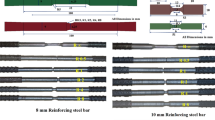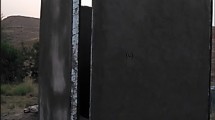Abstract
This paper is divided into two parts. The first part addresses the resiliency and sustainability of steel and composite structures from a fundamental standpoint, and it is intended as an introduction to the other six papers that form part of this issue related to resiliency of steel structural systems in seismic areas. The paper posits the idea that resiliency is a characteristic that embodies sustainability rather than the traditional opposite point of view. The second part of the paper is divided into two sections, with the first section describing a number of retrofit technologies with recentering characteristics that have been developed for small, seismically deficient buildings in developing countries. The second section describes an innovative connection between circular concrete filled tubes and conventional beams with reduced flange sections consisting of steel and shape memory alloy bars and end plates. The connection has partial restraint behavior and strong recentering properties. This connection is used to demonstrate that some creative thinking can lead to innovative ways of addressing issues related to robustness, resiliency and sustainability of steel structures.
Similar content being viewed by others
References
Reduction U N. My City is Getting Ready. Retrieved August 8, 2014, from Making Cities Resilient, 2012 (http://www.unisdr.org/ campaign/resilientcities)
Perrow C. The Next Catastrophe. Princeton: Princeton University Press, 2007
Tierney K. The Social Roots of Risk. Stanford: Stanford University Press, 2014
McAllister T. The Performance of Essential Facilities in Superstorm Sandy, Structures Congress 2014, ASCE, Reston, 2014
Swarup S, Lum K, Barrett C, Bisset K, Eubank S, Marathe M A. A synthetic information approach to urban-scale disaster modeling. IEEE 16th International Conference on Computational Science and Engineering (CSE), IEEE, 2013, 1105–1112
Kieffer S. The Dynamics of Disaster. New York: W.W. Norton, 1913
Bruneau M, Engelhardt M, Filiatrault A, Goel S C, Itani A, Hajjar J, Leon R, Ricles J, Stojadinovic B, Uang C M. Review of selected recent research on US seismic design and retrofit strategies for steel structures. Progress in Structural Engineering and Materials, 2005, 7(3): 103–114
Denavit M D, Hajjar J F, Perea T, Leon R T. Stability Analysis and Design of Composite Structures. Journal of Structural Engineering, 2016, 142(3): 04015157
Gilbert S. Disaster Resiliency: A Guide to the Literature. NIST SP 1117, NIST, Gaithersburg, MD, 2010
Bruneau M, Reinhorn A. Exploring the concept of seismic resilience for acute care facilities. Earthquake Spectra, 2007, 23(1): 41–62
Ayyub B. System Resilience for Multi-Hazard Environments: Definitions, Metrics and Valuation for Decision Making. Risk Analysis, 2013, 34(2): 340–355
OSU. Center for Resilience at The Ohio State University, Columbus, 2014 (http://resilience.osu.edu/CFR-site/concepts.htm)
NIST. Disaster Resiliency Framework (75% Draft for San Diego, CA, Workshop). NIST, Gaithersburg, MD, 2015
Burton C. The Development of Metrics for Community Resiliency to Natural Disasters. Dissertation for the Doctoral Degree. Columbia, SC: The University of South Carolina, Columbia, 2012
Krawinkler H, Deierlein G G. Challenges towards achieving earthquake resilience through performance-based earthquake engineering. In: Fischinger M, Performance-Based Seismic Engineering: Vision for an Earthquake Resilient Society. New York: Springer, 2014, 3–23
Clifton C, Bruneau M, MacRae G, Leon R T, Fussell A. Steel structures damage from the Christchurch earthquake series of 2010 and 2011. Bulletin of the New Zealand Society for Earthquake Engineering, 2011, 44(4): 297–318
Dong S, Feng C, Kamat V. Sensitivity analysis of augmented reality-assisted building damage using virtual prototyping. Automation in Construction, 2013, 33: 24–36
FEMA. NEHRP Recommended Seismic Provisions for New Buildings and Other Structures. FEMA P-750, FEMA, Washington, D C, 2009
Kurata M, Leon R T, Des Roches R. Rapid seismic rehabilitation strategy: Concept and testing of cable bracing with couples resisting damper. Journal of Structural Engineering, 2012, 138(3): 354–362
Kurata K. et al. 2013
Speicher M. Cyclic testing and assessment of shape memory alloy recentering systems. Dissertation for the Doctoral Degree. Atlanta, GA: Georgia Institute of Technology, 2009
Duerig T W, Melton K N, Proft J L. Engineering aspects of shape memory alloys. Butterworth-Heineman, Guildford (UK), 1990
Speicher M, Hodgson D E, Des Roches R, Leon R T. Shape Memory Alloy Tension/Compression Device for Seismic Retrofit of Building. Journal of Materials Engineering and Performance, 2009, 18(5–6): 746–753
Yang C S W, Des Roches R, Leon R T. Design and analysis of braced frames with shape memory alloy and energy-absorbing hybrid devices. Engineering Structures, 2010, 32(2): 498–507
Clifton C, Bruneau M, Mac Rae G, Leon R T, Fussell A. Steel structures damage from the Christchurch earthquake series of 2010 and 2011. Bulletin of the New Zealand Society for Earthquake Engineering, 2011, 44(4): 297–318
Chancellor B, Eatherton M R, Roke D, Akbas T. Self-centering seismic lateral force resisting systems: High performance structures for the city of tomorrow. Buildings, 2014, 4(3): 520–548
Rojas P, Ricles J M, Sause R. Seismic performance of posttensioned steel moment resisting frames with friction devices. Journal of Structural Engineering, 2005, 131(4): 529–540
Garlock M M, Sause R, Ricles J M. Behavior and design of posttensioned steel frame systems. Journal of Structural Engineering, 2007, 133(3): 389–399
Darling S. Seismic response of short period structures and the development of a self-centering truss moment frame with energydissipating elements for improved performance. Master Thesis, Virginia Tech, Blacksburg, VA, 2012
Eatherton M R, Ma X, Krawinkler H, Deierlein G G, Hajjar J F. Quasi-static cyclic behavior of controlled rocking steel frames. Journal of Structural Engineering, 2014, 140(11): 04014083
Panian L, Steyer M, Tipping S. Post-tensioned concrete walls for seismic resistance. PTI J, 2007, 5(1): 7–16
Hu J H. Smart Connection Systems, CRC Press, Boca Raton, FL, 2016
Yu G. Innovative self-centering connection for CCFT composite columns. Dissertation for the Doctoral Degree. The Graduate School, Virginia Tech, Blacksburg, VA, 2015
Wang W, Chan T M, Shao H L, Chen Y Y. Cyclic behavior of connections equipped with NiTi shape memory alloy and steel tendons between H-shaped beam to CHS column. Engineering Structures, 2015, 88: 37–50
Murray T M, Meng R L. Seismic Loading of Moment End-Plate Connections: Some Preliminary Results. In: Connections in Steel Structures III: Behaviour, Strength and Design. Bjorhovde R. et al. eds. Elsevier Applied Science, London, 1996
Andrawes B, Des Roches R. Effect of hysteretic properties of superelastic shape memory alloys on the seismic performance of structures. Structural Control and Health Monitoring, 2007, 14(2): 301–320
Author information
Authors and Affiliations
Corresponding author
Rights and permissions
About this article
Cite this article
Leon, R.T., Gao, Y. Resiliency of steel and composite structures. Front. Struct. Civ. Eng. 10, 239–253 (2016). https://doi.org/10.1007/s11709-016-0349-7
Received:
Accepted:
Published:
Issue Date:
DOI: https://doi.org/10.1007/s11709-016-0349-7




